The University of California, Santa Barbara (UCSB) claims the heaviest bicycle traffic of any campus in the state system, with 7 miles of Class-1, or dedicated, bike paths, over 20,000 bicycle parking spots, and more than half of its 26,000 students—by some estimates, closer to 70 percent of its undergraduates alone—riding there. “When school’s in session,” says Adam Jahnke, manager of the campus bike shop, “you’ll see a river of cyclists rolling down these paths—it’s such a massive flow that pedestrians often have to wait for an opening to cross.” UCSB’s cycling culture goes back decades. In 1974, it inspired undergrads to establish the Associated Students Bike Shop, providing repairs in a modest cracker box of a building, left from the campus’s days as a military base. Thirty-two years later, in 2006, the shop upgraded to a double-wide trailer on the same site. Still, as generations of students continued to staff it, the quarters remained cramped and quirky—and, by 2017, serious conversations with the university were under way to create a better, more “bespoke” home for this beloved institution. Finally, through an RFQ process, Los Angeles–based architects John Friedman Alice Kimm (JFAK) won the commission. Their 3,000-square-foot pavilion opened last September, launching the school year.
Remarkably, the new $3.66 million building is wholly student owned and financed—funded by the Associated Students of UCSB, a nonprofit that collects (and invests) an annual fee from all undergrads to provide services, opportunities, and advocacy not offered by the university.
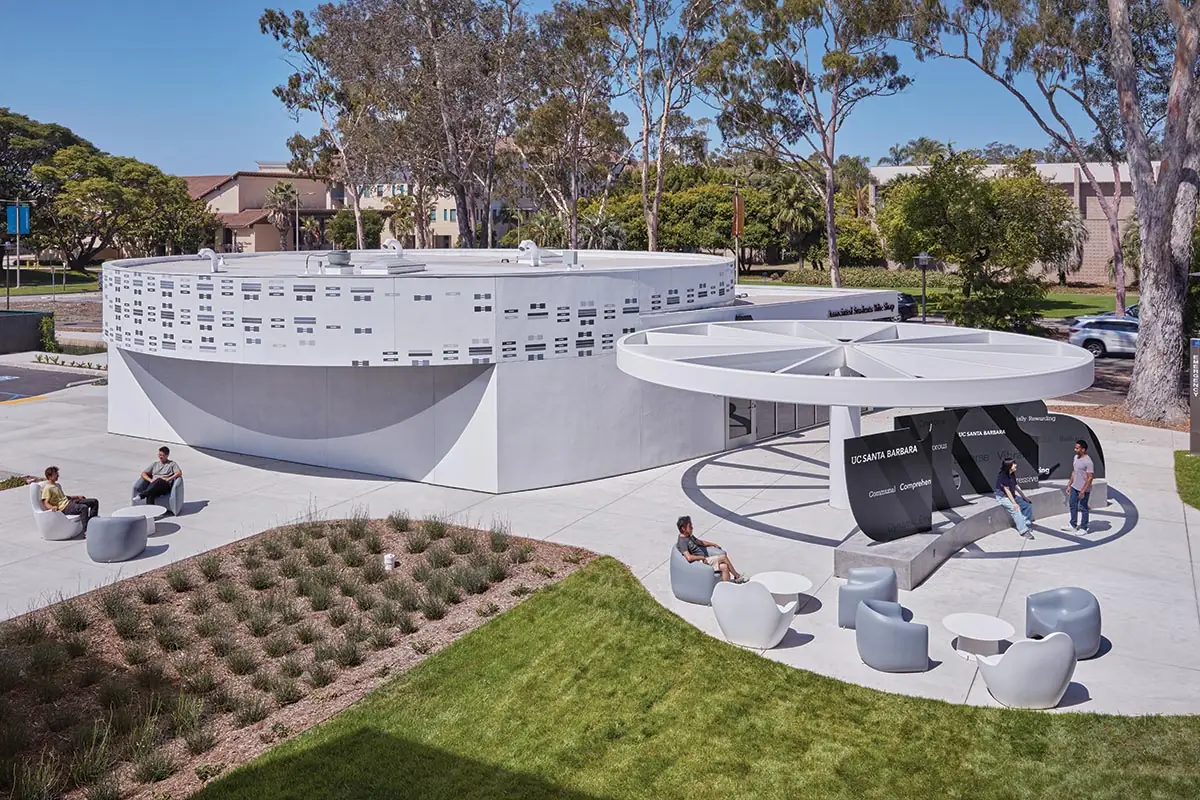
1
The shop features a walk-up service window and queuing area (top of page), spacious plazas with seating areas (1), and access to bike paths on the west side of the building (2). Photos © Benny Chan / fotoworks, click to enlarge.
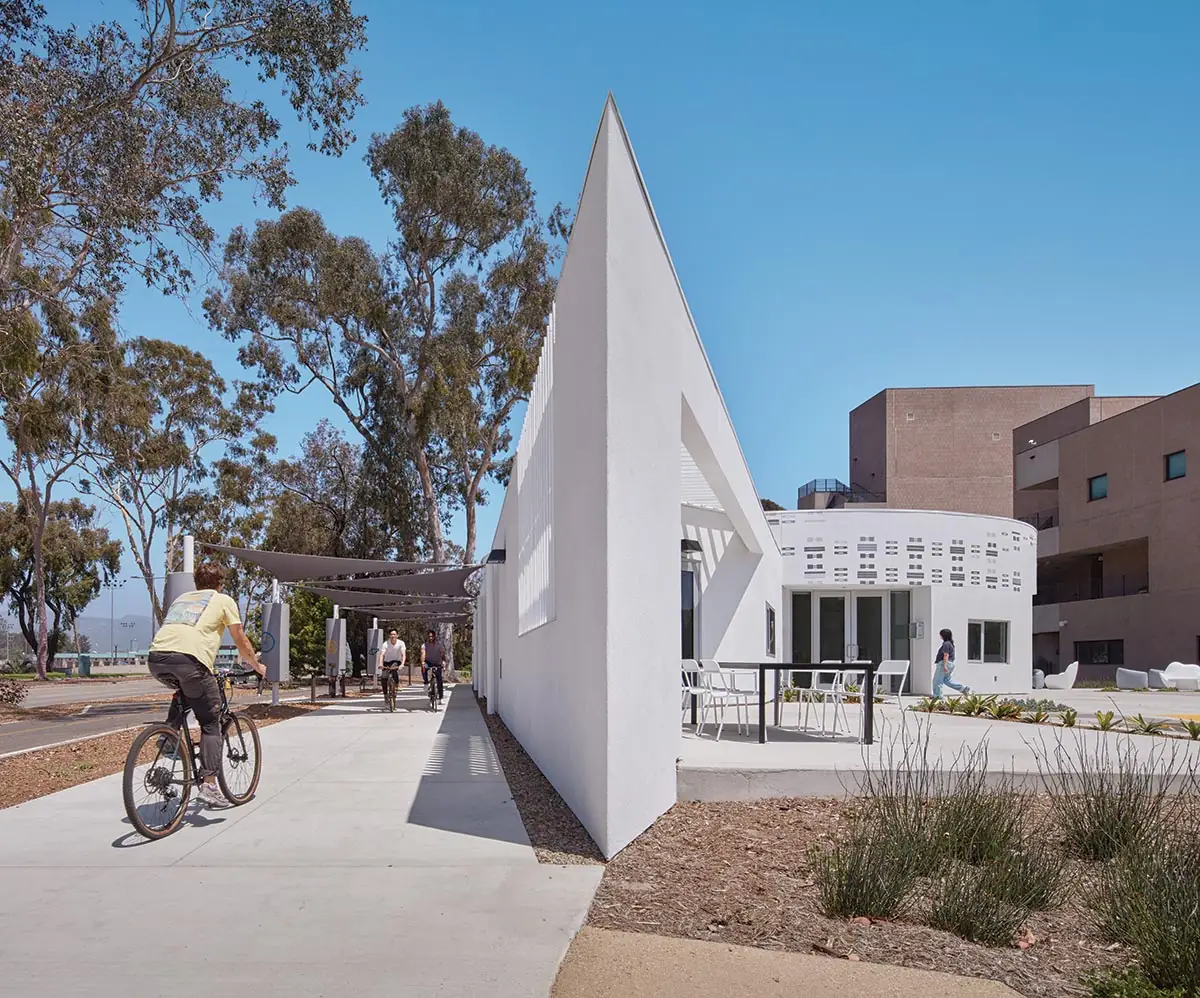
2
Among a dozen potential sites, the one JFAK chose is a flat, centrally located rectangle along a major bike path and roadway. It’s also beside the Student Affairs and Services Building (SAASB), which includes the campus visitor center and admissions office. Initially, some pushback came from those who envisioned an “oil-and-lube shop” with dirty, broken bikes blighting this prominent area. But the admissions leadership soon embraced the clean-lined design, with its focus on sustainability, wellness, entrepreneurship, and community.
The resulting one-story white-stuccoed building—rising to a flat-roofed drum, with a spoked, circular canopy—references both bicycles and the roundabouts throughout campus. Decorative patterning on the cylindrical form borrows from wheel-tread patterns. Under the canopy is a DIY area with free access to tools, enabling community members to do their own repairs. Inside, the pavilion, with entry-area storefront glazing, is bright and airy—essentially one big room with a service counter and open storage space, keeping bikes and parts visible to staff and customers. There’s also a small office, conference area, and bathroom (a precious amenity that the original shop lacked). The main space is high-ceilinged, with retractable air hoses dangling overhead, providing for up to 11 workstations. Underfoot, rubberized flooring helps minimize worker muscle fatigue, as well as noise levels and oil cleanup challenges. Plywood wall panels—economical and befitting a workshop—add visual warmth.
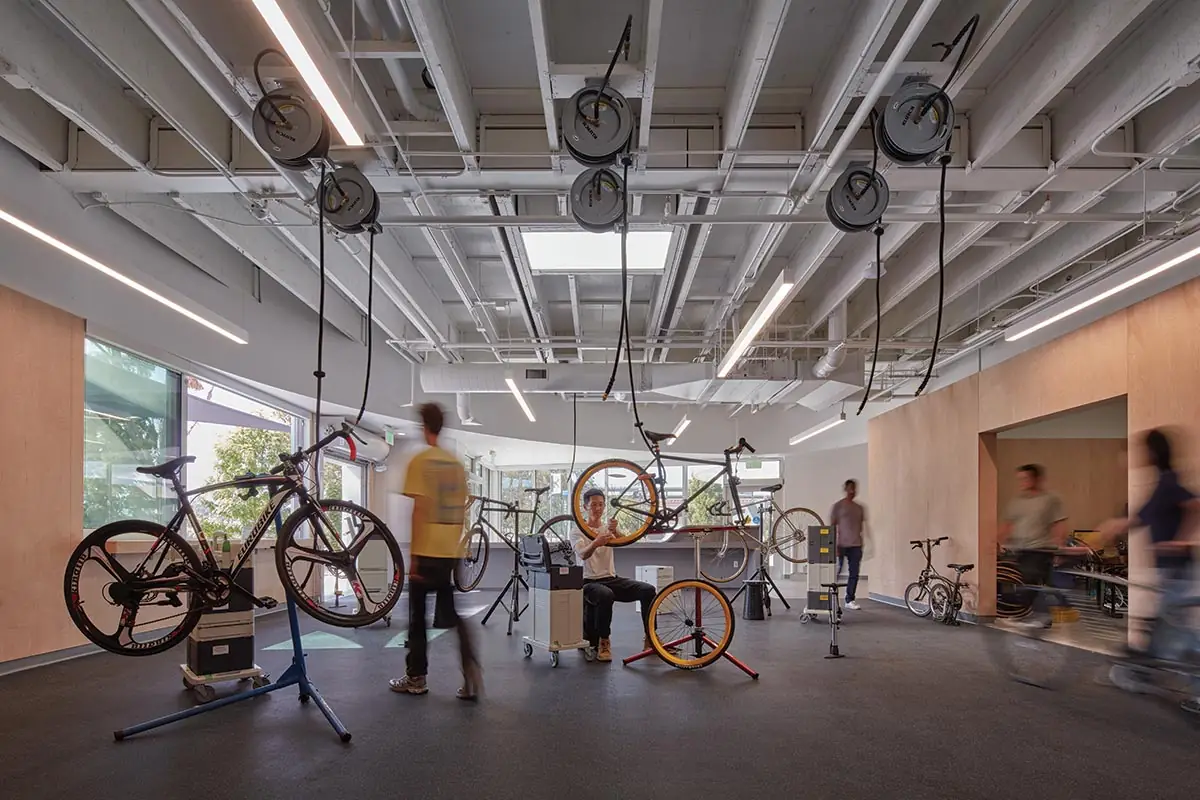
3
The main repair space (3) is large enough to accommodate 11 individual workstations while the front entry area (4) features a service counter and open storage space. Photos © Benny Chan / fotoworks, click to enlarge.
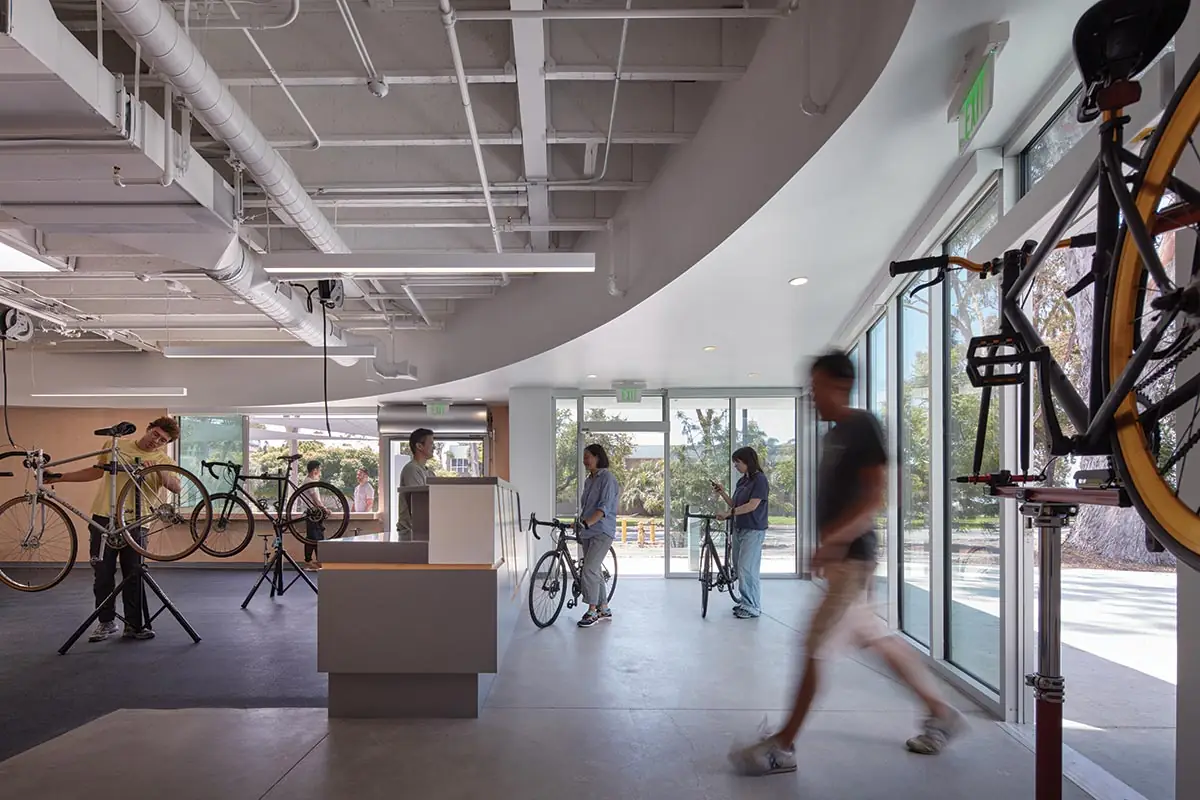
4
“We also wanted a service window with outdoor queuing, a key element of our earlier location,” says Jahnke. “It enabled us to triage repairs and give advice, and was integral to the culture of the place, creating a real social hub.” JFAK improved on the original with a 12-foot-long counter and tri-panel window that slides open, alongside a roll-up door to receive bikes for servicing. The queuing area—on the building’s west side, paralleling a bike path a few feet away—has shading triangles of stretched fabric overhead. On the pavilion’s east side is a 200-foot-long oval test track, allowing customers to check out their repairs. Nearby is a bioswale, one of many sustainable features of this LEED Platinum–certified project.
At the admissions director’s request, JFAK created a sculptural freestanding screen, facing the SAASB. With plates of steel set in a concrete bench (and inspirational words provided by the university), it has become a popular “selfie wall.”
“The way the shop forms a gateway, gently framing the administration building, is a great double-use of a small structure,” says campus architect Julie Hendricks, who oversaw the project. “Biking is obviously essential to UCSB, and the new pavilion becomes its vortex—a dynamic hub that welcomes prospective students and engages those already here.”
Click drawing to enlarge
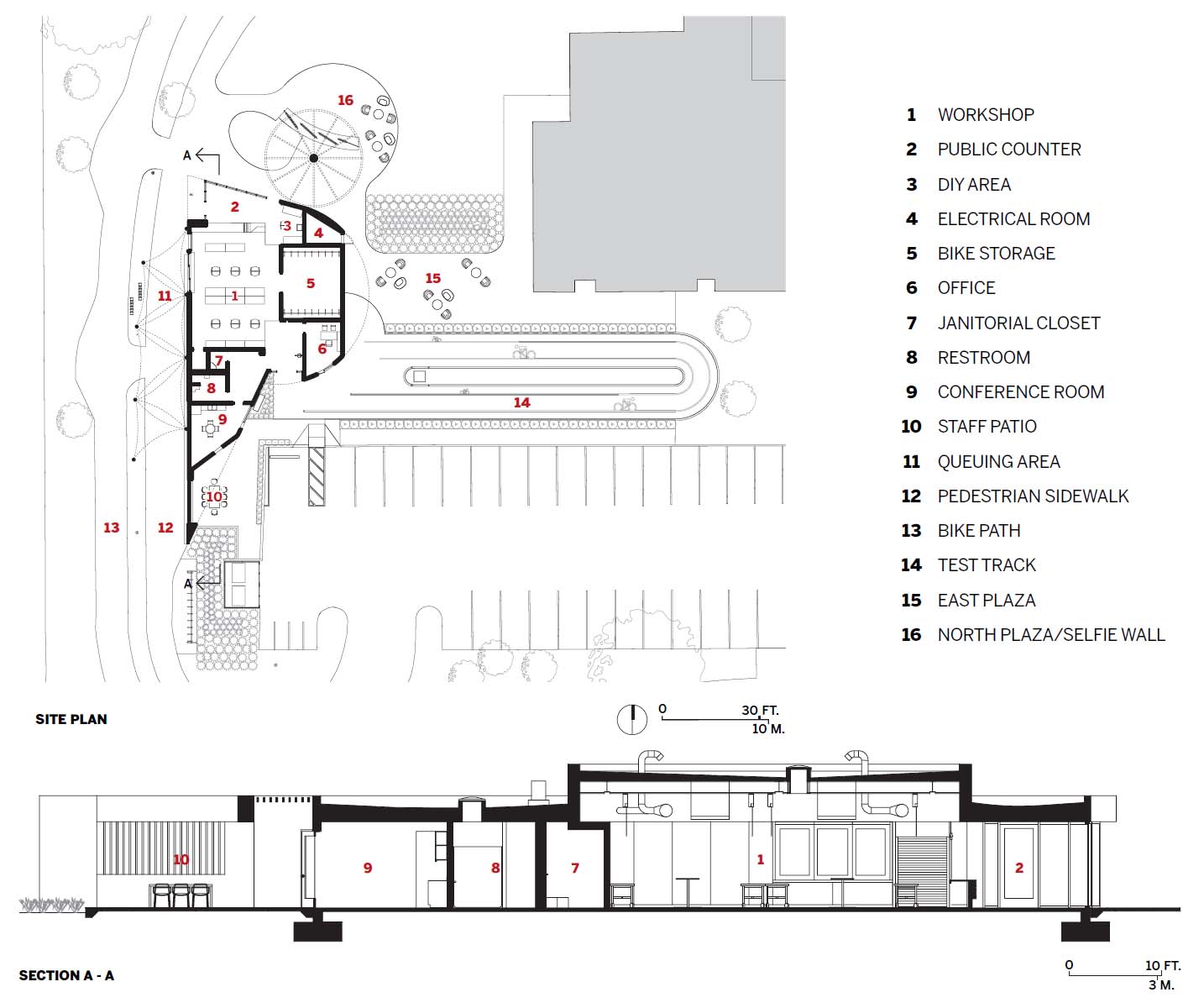
Credits
Architect:
John Friedman Alice Kimm Architects — Alice Kimm, principal in charge; Alice Kimm, John Friedman, lead designers; Gordon Au, project manager and designer; Michael Royer, designer; Tyler Johnson, Evan Chang, Adelfrid Ramirez, design team
Engineers:
Nabih Youssef & Associated Structural Engineers (structural); Introba Engineers (m/e/p); KPFF (civil)
Consultants:
Studio–MLA (landscape architecture); Seeking Balance (sustainability and LEED certification); SGH (building envelope)
General Contractor:
Cal-City Construction
Client:
Associated Students of UCSB
Size:
2,950 square feet (building); 21,473 (site)
Cost:
$3.66 million (construction)
Completion Date:
August 2023
Sources
Stucco Cladding:
Omega Products International
Roofing:
Hunter Panels (built-up roofing); Sika (elastomeric)
Windows & Entrances:
Arcadia
Roll-up Door:
Cookson
Interior Rubber Tiles:
Tarkett
Glazing:
Viracon (glass); Velux (skylights)


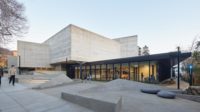
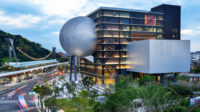
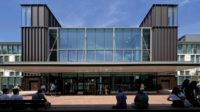
Post a comment to this article
Report Abusive Comment